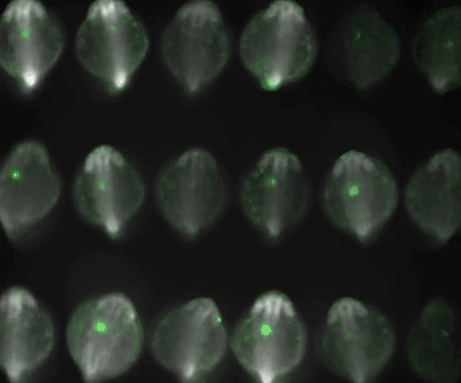From Fish to Humans: The Synchronized Beat of Heart Development

Heart cells in developing zebrafish start beating suddenly and all at once, according to a recent study conducted by researchers at Harvard Medical School and Harvard University. The study used zebrafish as a model organism and found that as calcium levels and electrical signals increase, the heart cells begin to beat. Surprisingly, each heart cell has the ability to beat on its own, without a pacemaker, and the heartbeat can start in different locations within the heart. This new insight into the development of the heartbeat could help researchers better understand cardiac irregularities in humans.
The researchers initially set out to study how cells in developing zebrafish communicate and cooperate with each other. However, they realized that the details of how heart cells start beating were still unknown. Using fluorescent proteins and high-speed microscope imaging, the researchers observed that all the heart cells transitioned abruptly from not beating to beating, with simultaneous spikes in calcium and electrical signals.
Where Does Heartbeat Start?
Further experiments revealed that one region of the heart fires first during each heartbeat, triggering a wave of electricity that quickly spreads through the rest of the cells and prompts them to fire. Interestingly, the location of the first beats varied among different zebrafish, suggesting that the cells that initiate the heartbeat are not unique.
Unlike adult hearts, where specialized pacemaker cells control the heartbeat, most cells in the embryonic heart have the ability to beat on their own. This discovery challenges previous assumptions and highlights the importance of understanding the developmental process of the heart.
Why Zebrafish?
Zebrafish are an ideal model organism for studying heart development due to their transparency, quick growth rate, and ease of imaging. The researchers believe that similar processes may occur in other species, including humans.
This study offers new insights into the development of the heartbeat and paves the way for further research on heartbeat development in different species. Understanding how the heart develops may provide valuable information on what happens when control mechanisms break down, leading to cardiac irregularities in humans.






